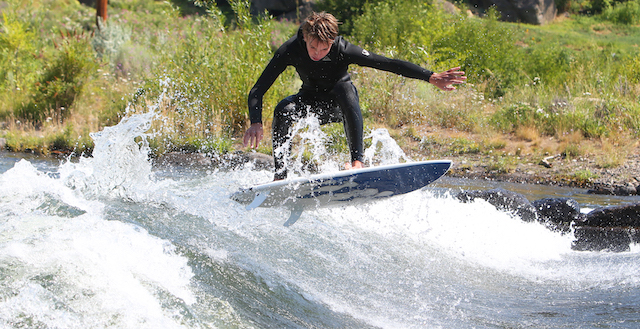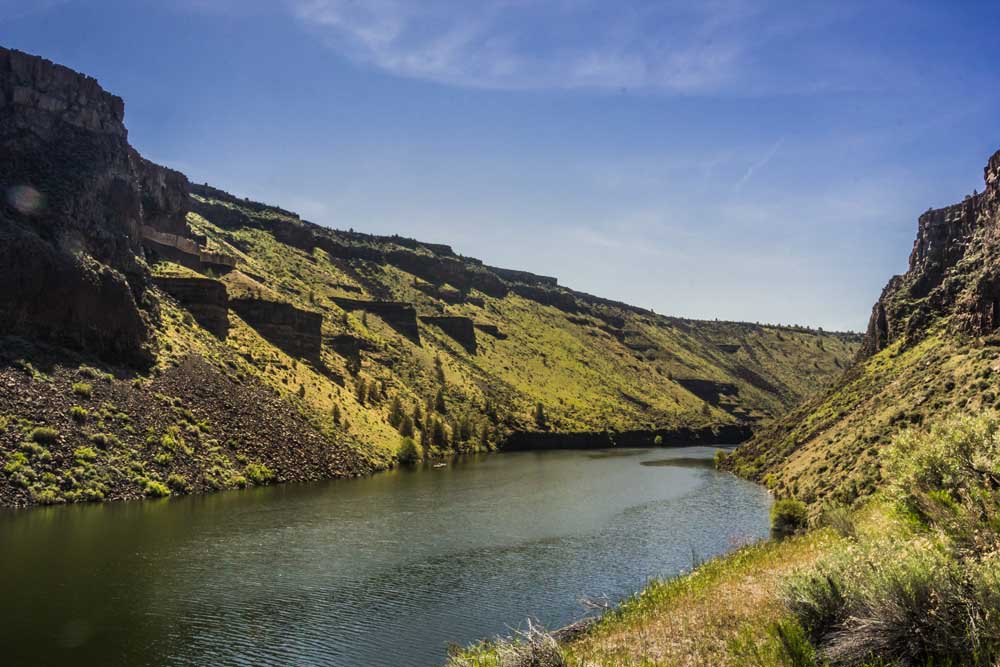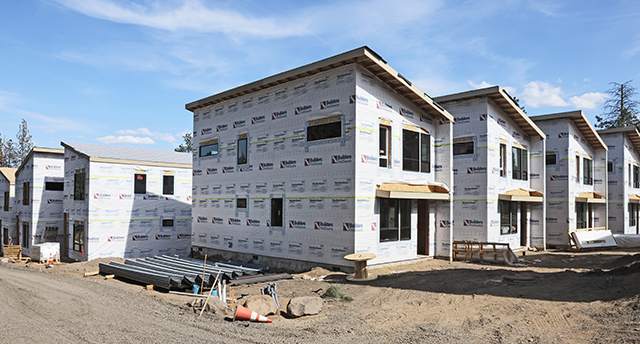Increased snowpack, high reservoirs mean higher Deschutes River flows
Published 2:07 pm Tuesday, June 24, 2025

- Summit Surf Team member, Declan Skuse floats an ollie, while riding at the surf wave at the Bend Whitewater Park at McKay Park in Bend Friday morning. 7-26-24
On a recent weekday, Bend resident Ken Cameron was down at the Bend Whitewater Park carving turns on the surf wave during his lunch break. The water was moving swiftly through the narrow channel north of the Colorado Avenue Bridge and he wanted to take advantage of the good conditions.
“The water is pretty high. It depends on the season, what the canals are doing and what the farmers need. We react to that,” said Cameron, speaking on the banks of the Deschutes before heading back to work.
Irrigation demand for water, along with increased snowpack this year in the Central Oregon Cascades, have combined to create the excellent surf conditions. Surfers are responding by lining up at the wave, taking turns on the wave face shaped by computer controls by specialists employed by Bend Park & Recreation District.
“The wave is working fine. It’s pretty well set up for summer,” said Cameron, a regular who has surfed in Bend’s standing wave for around four years.
The amount of water flowing down the river peaked in early June at around 1,770 cubic feet per second, measured at Benham Falls by the U.S. Bureau of Reclamation. That flow level is higher than at any point during the same month a year ago, when flows at the same location peaked at 1,702 cfs.
“Natural flow was considerably higher than the last five years,” said Jeremy Giffin, watermaster for the Deschutes Basin for the Oregon Water Resources Department. “(Irrigation districts) are getting more natural flow, so we are not drafting as much from the reservoirs.”
Giffin says natural flow — the amount of water that would flow down the river if there were no dams or diversions — is 12-15% higher this year than recent years.
Ryan Richard, the waveshaper for the Bend Park & Recreation District, says when the river does rise above average flows, that just means monitoring is needed.
“The surfers like a nice clean face to the wave, sometimes at the higher flows it can be a little harder to keep that clean,” said Richard. “So at this higher flow I spend just a little more time on the gates, making adjustments, doing tweaks. Trying to make everything good.”
Streamflow from the Upper Deschutes down to Bend during summer can vary widely based on agricultural needs. When the weather warms up, North Unit Irrigation District, which irrigates farmland in Jefferson County with water stored in Wickiup Reservoir, releases more stored water from Wickiup.
This year there is more water to give as the district has almost doubled its water allotment compared to previous years, thanks to multiple years of above average snowpack. Stream flows are also increased because tributaries like the Little Deschutes River are higher this year.
Average streamflow in the Deschutes Basin is 107% of normal, according to data compiled by the Oregon Water Resources Department. In Southern Oregon, streamflows range from 150% to 180% of normal.
The higher water levels are a win on multiple fronts. Farmers and surfers benefit but it’s also good for fish, frogs and other aquatic species that benefit when water levels improve. The good snowpack has also helped aquifer levels in some areas of the Deschutes Basin, which improves overall hydraulic health by increasing spring runoff.
“Closer to the Cascades, where the precipitation recharge signal is the strongest (aquifer levels) have at least stopped declining or even began slowly rising,” said Joe Kemper, a hydrologist with the Oregon Water Resources Department.
Experts still caution that dry conditions could return. According to the U.S. Drought Monitor, roughly half of the tri-county (Deschutes, Crook and Jefferson counties) are still considered abnormally dry.
Back at the surf wave, Declan Skuse, a sophomore at Summit High School and a five-year veteran of the surf wave, says there are pros and cons to the bigger wave this year. Emerging from the river, he reflected on his surf session.
“It’s a little harder to get out (compared to last year), to swim back up,” said Skuse. “But it’s stronger, so it’s a lot more fun inside the wave.”








